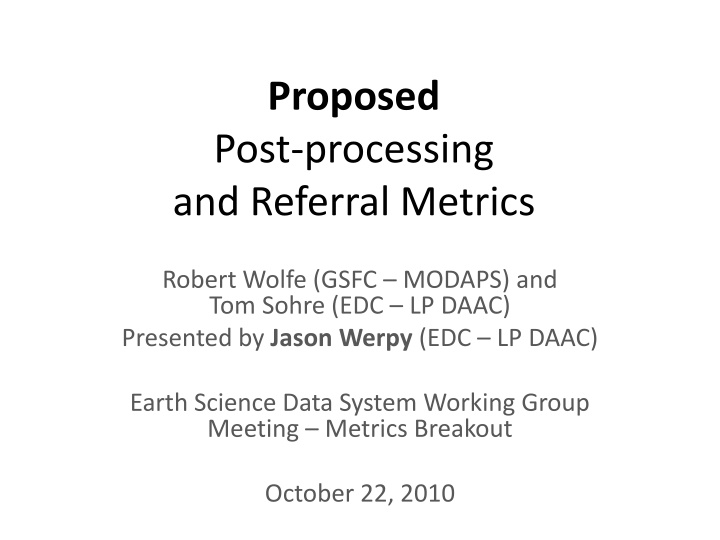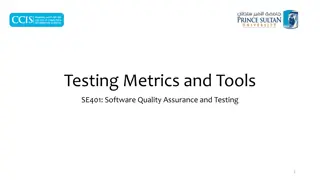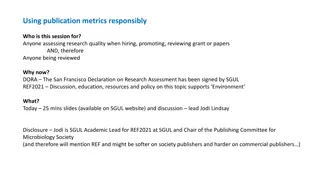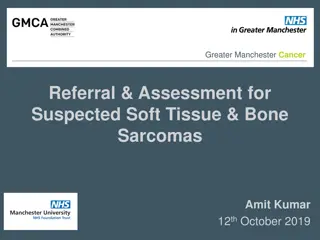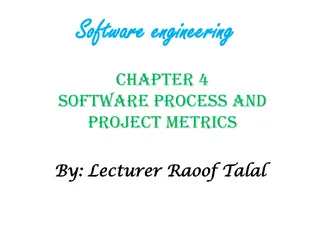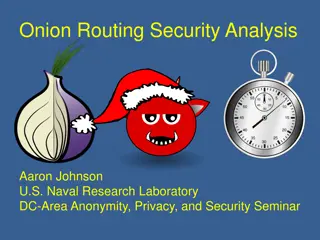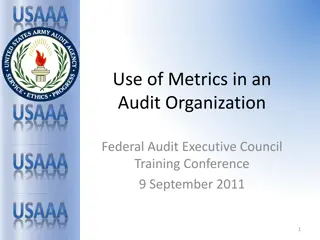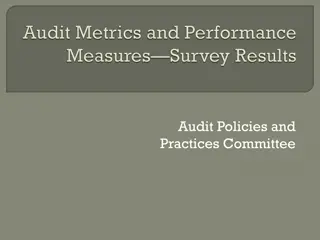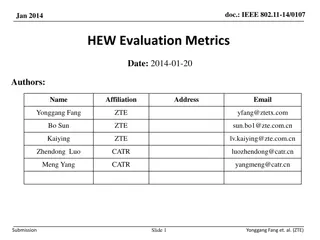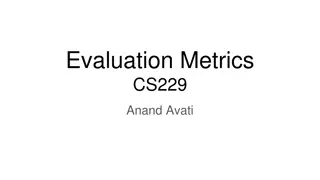Proposed Post-processing and Referral Metrics Challenges
Post-processing metrics play a crucial role in understanding the value added by providing customized data products to users. The challenges lie in reporting the volume of final data delivered versus the input data required, highlighting the need for detailed post-processing metrics. These metrics help NASA management evaluate resource utilization and data reduction achieved through post-processing activities.
Download Presentation

Please find below an Image/Link to download the presentation.
The content on the website is provided AS IS for your information and personal use only. It may not be sold, licensed, or shared on other websites without obtaining consent from the author.If you encounter any issues during the download, it is possible that the publisher has removed the file from their server.
You are allowed to download the files provided on this website for personal or commercial use, subject to the condition that they are used lawfully. All files are the property of their respective owners.
The content on the website is provided AS IS for your information and personal use only. It may not be sold, licensed, or shared on other websites without obtaining consent from the author.
E N D
Presentation Transcript
Proposed Post-processing and Referral Metrics Robert Wolfe (GSFC MODAPS) and Tom Sohre (EDC LP DAAC) Presented by Jason Werpy (EDC LP DAAC) Earth Science Data System Working Group Meeting Metrics Breakout October 22, 2010
Metrics Challenge #1: Post-processing Value-added services are available to users to provide customized products, rather than just the standard HDF granule Distribution metrics have historically focused on how much data went out the door (granules or volume) And, performance measurement baselines have been developed around distribution volumes . Challenges: Services perform processing on the user s behalf But this processing effort isn t currently reported. Services such as mosaicing and subsetting change what is being distributed (could be a portion of the original data or a new piece of data that is really a combination of multiple archived granules) ... What should be reported? The volume/number of final data pieces delivered to the user? And/or the volume/number of input data necessary to create the value-added product? Value-Add Processing Service (i.e. MRTWeb) Subset request Data Archive (i.e. LPDAAC) user 1 granule returned from the Service ;100k (10x reduced volume) 1 granule returned from the archive to support request; 1MB Value-Add Processing Service (i.e. MRTWeb) Mosaic request Data Archive (i.e. LPDAAC) user 1 granule returned from the Service 10 granule returned from the archive to support request 2
Why Post-processing Metrics? Post-processing metrics would help NASA management understand the value added from post-processing at the NASA data centers Questions that could be answered are: How much does post-processing reduce data volume (and/or number of granules) to users? How much processing resources were used to perform the post-processing? ESDS WG - Oct. 22, 2010 3
Post-processing Metrics Post-processing activities include: reformatting, spatial sub-setting, variable subsetting, mosaicing, reprojection, aggregation, filtering Some of these activities have minimal computational requirements (e.g. reformatting, sub-setting) and others have are significant (e.g. reprojection) Most of the activities are volume reducers, but some increase the volume (e.g. reprojection to a smaller pixel size) Many of the activities reduce the number of granules, but for some the number of granules may increase (e.g. reformatting) In most cases, the post-processing occurs at the data center where the data is archived, but in some cases it may be done at a separate data center ESDS WG - Oct. 22, 2010 4
Additional Post-processing Metrics Simplified Post- processing flow Direct delivery data flow User Post-processing data flow DU - Data to user Data Center Data Archive Staging Area DP1 Data to post-processing DP2 Post- processed data Post Processing PP Post processing computation ESDS WG - Oct. 22, 2010 5
Post-processing Metrics Standard data transfer metric: DU Data to user: volume and number of granules Proposed additional post-processing metrics: DP1 Data to post-processing: volume and number of granules DP2 Post-processed data: volume and number of granules PP Post-processing computation: standard computational metrics (standardized CPU seconds?), number of post-processing orders and type(s) of post- processing ESDS WG - Oct. 22, 2010 6
Additional Post-processing Metrics Two Data Centers Case Simplified Post- processing flow User DU - Data to user DD - Data center transfer (for post processing) Data Center 1 (archive) Data Center 2 (distribution) Data Archive Staging Area Staging Area DP1 Data to post-processing DP2 Post- processed data DP1 Data to post-processing DP2 Post- processed data Post Processing Post PP Post processing computation Processing PP Post processing computation Post-processing at archive data center Post-processing at distribution data center ESDS WG - Oct. 22, 2010 7
PP Metrics Two Data Center Case Standard data transfer metric: DU Data to user: volume and number of granules Proposed additional post-processing metrics: DP1, DP2 and PP Same as single data center case DD Data center transfer (for post-processing): volume and number of granules DP1 , DP2 and PP (optional) additional post- processing metrics from archive data center ESDS WG - Oct. 22, 2010 8
Metrics Challenge #2: Referral User(s) utilize various interfaces to search/access data from an archive (DAAC) The archive currently reports distribution metrics (i.e. how much data went out the door ) But the mechanism to find the data isn t generally reported? Challenges: How to recognize the referral mechanism? (what metrics?) Don t want to double count distribution (once from the archive, and again from the client ) The referral mechanism may or may not be another ESDIS partner. (could be a 3rd party using a web service developed by the archive) Data Discovery Interface (i.e. WIST) Data Discovery Interface (i.e. Mercury) Data Archive (i.e. LPDAAC) user Data Discovery Interface (i.e. LAADS) data distribution ESDS WG - Oct. 22, 2010 9
Referral Metrics for Cross-Data Center Ordering Metrics are needed in the case for cross-data center ordering Scenario: A search and order tool at one data center (or WIST/ECHO) is used to find a set of data (granules) at a different center. Why?: It would be useful to know how much (and what) data is being cross-searched. Metric: The number of times a user searches (and finds) a data set stored at a different data center. ESDS WG - Oct. 22, 2010 10
Questions/Comments? ESDS WG - Oct. 22, 2010 11
